Learn AI Development: Our Guide for Tech Leaders in 2025

Oussama Bettaieb
Marketing Director

Share to AI
Ask AI to summarize and analyze this article. Click any AI platform below to open with a pre-filled prompt.
A recent survey says 92% of business leaders plan to invest in generative AI tools within the next three years. Not experiment, but invest. For anyone in a senior technology role, that’s not a distant concern.
And now, there’s a new expectation for you: figure out where AI fits, make the case for funding, and roll out something that works. Since it’s unlikely that you’d become a machine learning expert overnight, what’s the best way to approach it for your business?
Too many business owners and operators come to Aloa with the same question. You need AI to deliver results, not research papers. So we help you learn AI development in a way that strips out the noise and keeps the focus on outcomes that matter to your business. From shaping strategy to building workflow automation and internal tooling, we design solutions that fit your operations.
And this guide covers the essentials. We’ll get into the skills that give you a solid footing, an AI learning path you can fit into your schedule, the AI tools and libraries worth your attention, and ways to put them to work.
Foundational Skills for Learning AI Development
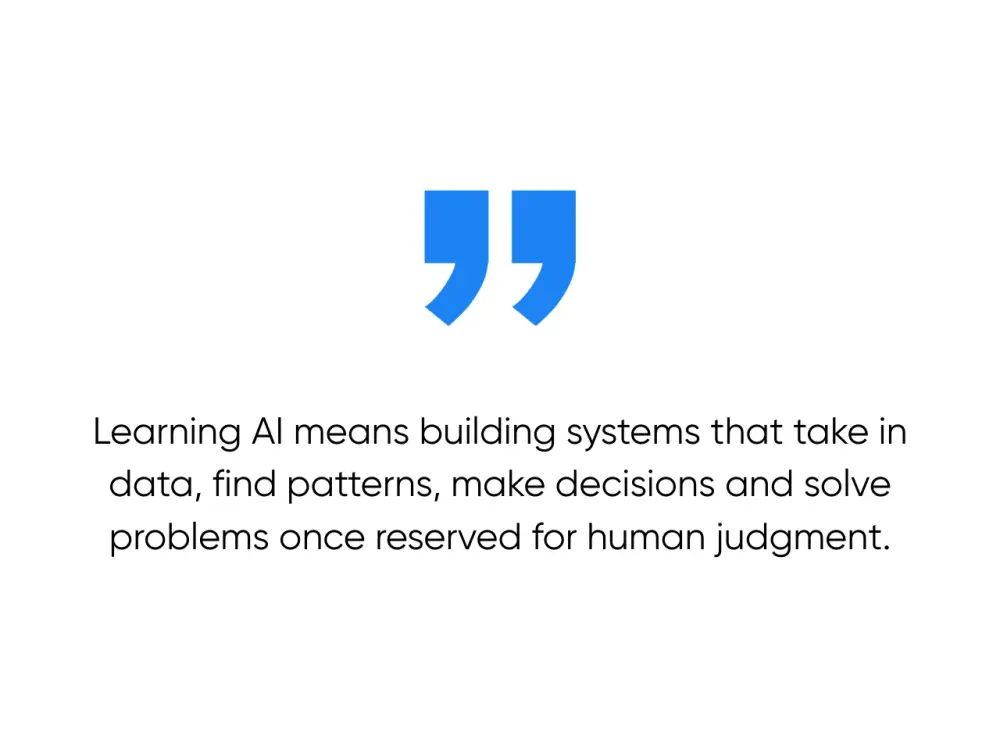
When you learn AI development, you’re building systems that can take in data, find patterns, and make decisions, which are jobs we usually associate with human judgment. These systems rely on algorithms and models to process information, solve problems, and act on what they find.
Before you sink resources into an AI project, it’s worth getting familiar with a few core skills. You don’t need the depth of a data scientist, but knowing the basics of AI helps you ask better questions, hire the right people, and keep projects from drifting off course.
Mathematics and Statistics
AI runs on math, at scale. A few concepts will give you the edge in spotting whether a model’s results are worth trusting and deciding how to use AI in ways that make sense for your business:
- Probability: Gives you a way to measure uncertainty. If an AI predicts an 80% chance a product will sell out, you can decide whether that’s enough to change your inventory plans.
- Linear Algebra: Dictates how data is represented in AI models, especially in image recognition and natural language processing. Think of it as the blueprint for how the model “views” your data.
- Statistics: Correlation and regression help separate meaningful trends from random noise. Without it, you risk making calls based on misleading patterns.
You don’t have to run the numbers yourself, but you do need to recognize when they don’t add up.
Programming Languages (especially Python)
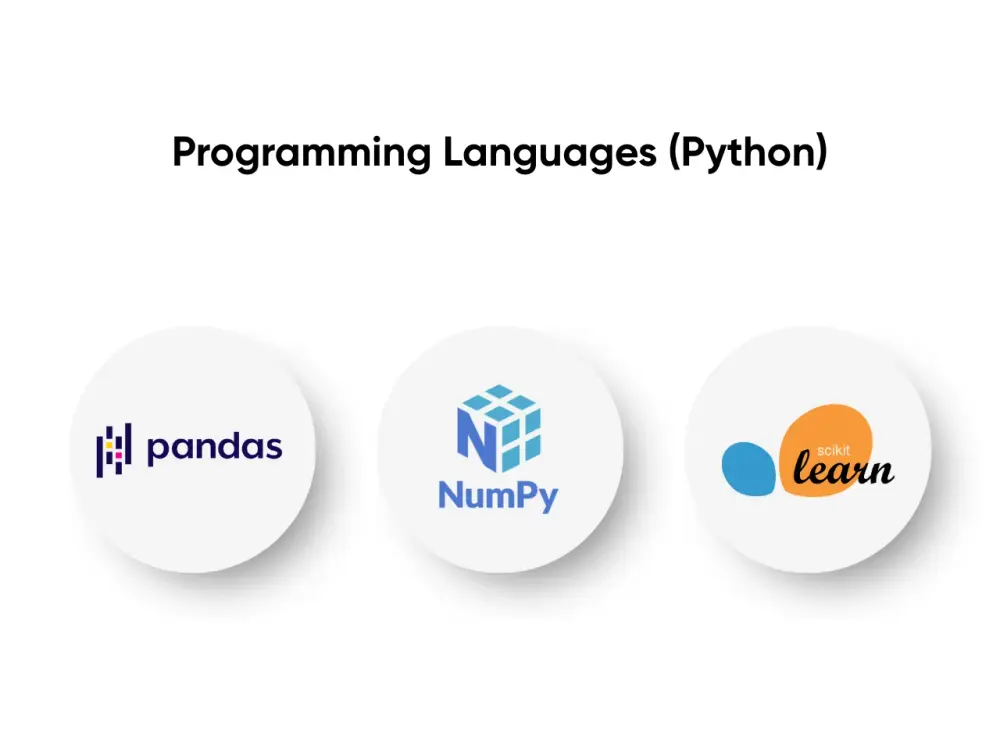
Python is the go-to programming language in artificial intelligence development because it’s easy to read, flexible, and supported by a massive ecosystem of AI tools and libraries:
- Pandas: Cleans and organizes data, turning messy records into something your model can work with.
- NumPy: Handles the heavy calculations so models run smoothly.
- Scikit-learn: Lets you test and compare machine learning models without starting from scratch.
A working knowledge of Python syntax and these libraries will help you tell the difference between a realistic development estimate and one that’s far too optimistic. It’s not required, but great to have if you’re going in-depth.
Data Science and Data Structures
AI projects are only as strong as the data you feed them. In your own systems, pay attention to:
- Data Quality: Missing values, outdated entries, and duplicates can wreck accuracy.
- Data Structures: Formats like CSV, JSON, and relational tables determine how easily your data can flow into AI platforms.
- Data Preparation: Removing outliers, normalizing values, and formatting fields often mean the difference between a smooth rollout and months of rework.
If you're ready to put these fundamentals to work at scale, Aloa can help bridge the gap between theory and execution. We design, build, and roll out AI solutions tailored to your existing processes, without ripping out systems you’ve spent years building. From automating routine reporting to creating internal apps that surface the right data at the right time, we make sure AI starts delivering value from day one.
Creating Your AI Learning Roadmap
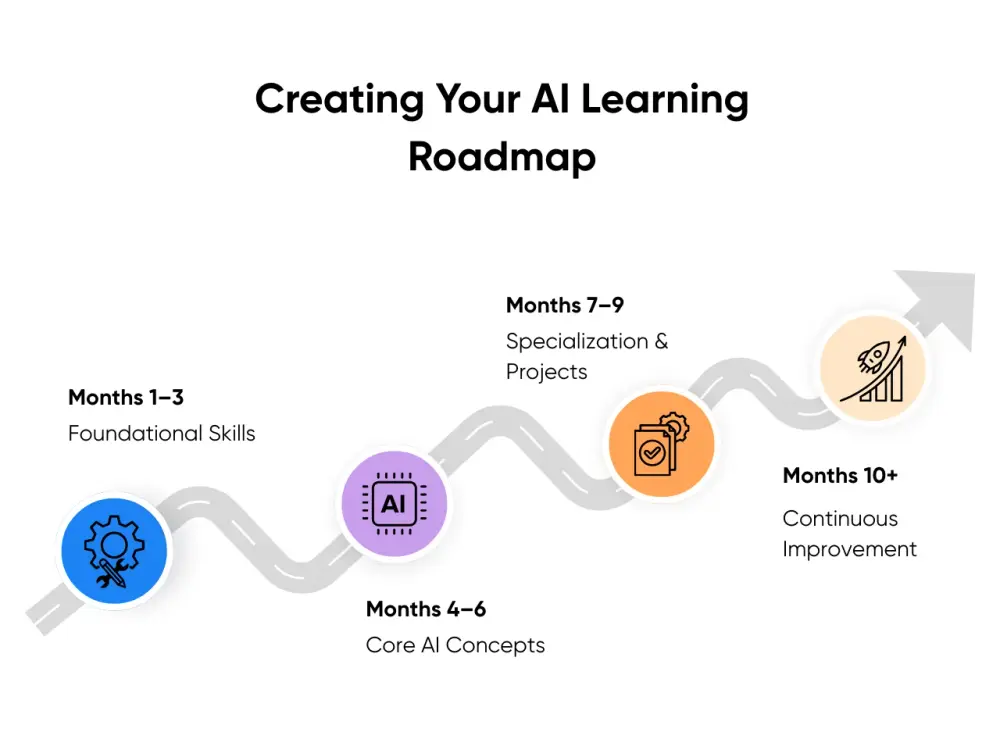
You wouldn’t launch a new product without a plan. Learning AI is no different. A learning plan keeps you focused, builds skills in the right order, and helps you step into AI conversations ready to lead (not just respond).
Here’s a practical four-phase path you can work through at your own pace:
Months 1–3: Foundational Skills
The goal here is simple: get enough baseline knowledge to see what AI can do and how it works. Start with small wins you can build on:
- Mathematics & Statistics Basics: Refresh your grasp of probability, linear algebra, and core statistics. Just a few hours a week can make you more confident in what the numbers are telling you.
- Python Familiarity: Learn how the language is structured and practice basic functions. Keep it simple: load a dataset, run a quick calculation, or use a basic library.
- Data Fundamentals: Understand how data is stored, cleaned, and formatted for AI models.
Resources to explore at this stage include:
- Free: Elements of AI, Google AI Essentials, Khan Academy (statistics refresher)
- Paid: Coursera’s “AI for Everyone” by Andrew Ng, DataCamp’s “Introduction to Python”
Months 4–6: Core AI Concepts
Once the basics feel solid, move into how models work and how to judge their performance. Focus on understanding these mechanics well enough to evaluate technical proposals:
- Machine Learning Types: Supervised, unsupervised, and reinforcement learning (plus when each makes sense).
- Neural Networks: How layers in deep learning models process and transform information.
- Model Evaluation: Accuracy, precision, recall, and why these metrics matter for your business outcomes.
Resources to guide this stage include:
- Free: Google's “Machine Learning Crash Course”
- Paid: Coursera’s “Machine Learning Specialization” by Stanford
Months 7–9: Specialization & Real-World Projects
By now, you should have enough context to start solving business problems with AI. The focus is on applying your skills to projects that could influence your organization directly. Here's how:
- Pick a Specialization: Choose natural language processing (NLP), computer vision, or generative AI based on your industry needs.
- Run a Proof of Concept (PoC): Keep it small but relevant, like a chatbot for HR questions, automated invoice categorization, or image recognition for quality control.
- Work with Real Data: Use anonymized company datasets to make your tests realistic.
Resources that work well here include:
- Free: Kaggle datasets and competitions, Hugging Face tutorials for NLP
- Paid: Udemy’s “Deep Learning A-Z”, DataCamp’s “Generative AI Concepts”
Months 10+: Continuous Improvement
AI changes quickly. At this stage, the goal isn’t just to keep learning but also to stay ready to adapt projects and strategies as new tools emerge:
- Stay Updated: Follow AI research summaries, newsletters, and industry blogs.
- Join Communities: Contribute to open-source projects or participate in AI-focused Slack and LinkedIn groups.
- Experiment Regularly: Block out time each quarter to try new tools or models.
Resources worth adding to your routine include:
- Free: Papers with Code, OpenAI, Google AI, and Aloa blog posts
- Paid: Subscription to AI-focused newsletters, like Byte-Sized (Aloa) or The Batch (DeepLearning.AI)
Leaders who stick to a plan like this don’t just “learn about AI.” They build the judgment to make smart investments, ask sharper questions, and ensure every project supports business goals. For those who want to move faster, AI consulting from Aloa gives you direct access to experts, vetted AI tools and libraries, and structured support so your projects start strong and scale smoothly.
Implementing AI: Tools and Real-World Projects
Once you’ve built a foundation, it’s time to move from theory to action. This is where you start picking the tools that fit your goals and applying them to projects that cut costs, save time, or create new revenue streams. You don’t need to master every platform, but knowing what each can do helps you guide your team and set realistic timelines.
Essential AI Tools
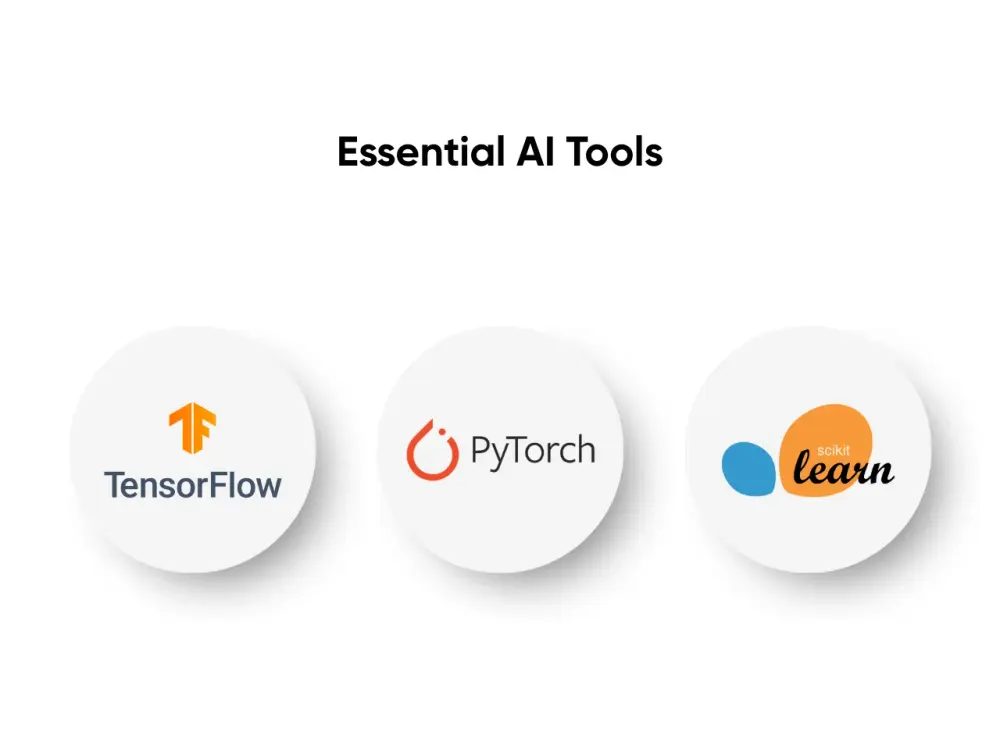
These three platforms show up again and again in artificial intelligence development, each with its own strengths:
- TensorFlow: A versatile platform for building and training machine learning models. It’s well-suited for deep learning tasks like image recognition or speech processing. For example, a manufacturer could use TensorFlow to scan product images for defects before they ship.
- PyTorch: Known for its flexibility and speed when prototyping. It’s popular in research but also used in production for custom AI solutions. A healthcare startup might use PyTorch to create a model that flags early signs of disease in patient data.
- Scikit-learn: Ideal for smaller, more straightforward projects. It offers prebuilt algorithms for classification, regression, and clustering. A retail business could use Scikit-learn to segment customers based on purchase history.
You don’t have to be the one writing the code. But knowing where each of these tools shines makes it easier to choose the right tech stack from the start.
Engaging in AI Communities
Learning doesn’t stop with tools. Being active in AI communities connects you to shared solutions, new ideas, and lessons learned from real projects. You may join:
- Kaggle: Access public datasets, study example code, and see how others tackle similar problems..
- Hugging Face Forums: A hub for conversations on natural language processing and generative AI models.
- Aloa’s AI Builder Community: A real-time space we host on Discord for AI developers, data scientists, and tech leaders to swap tips, troubleshoot issues, and share the latest research and tools.
These connections give you a steady stream of perspectives that can shorten project timelines and reduce costly trial-and-error. You can also explore our guide on how to learn AI for more curated resources and strategies to keep your skills sharp.
Working on Real-World Projects
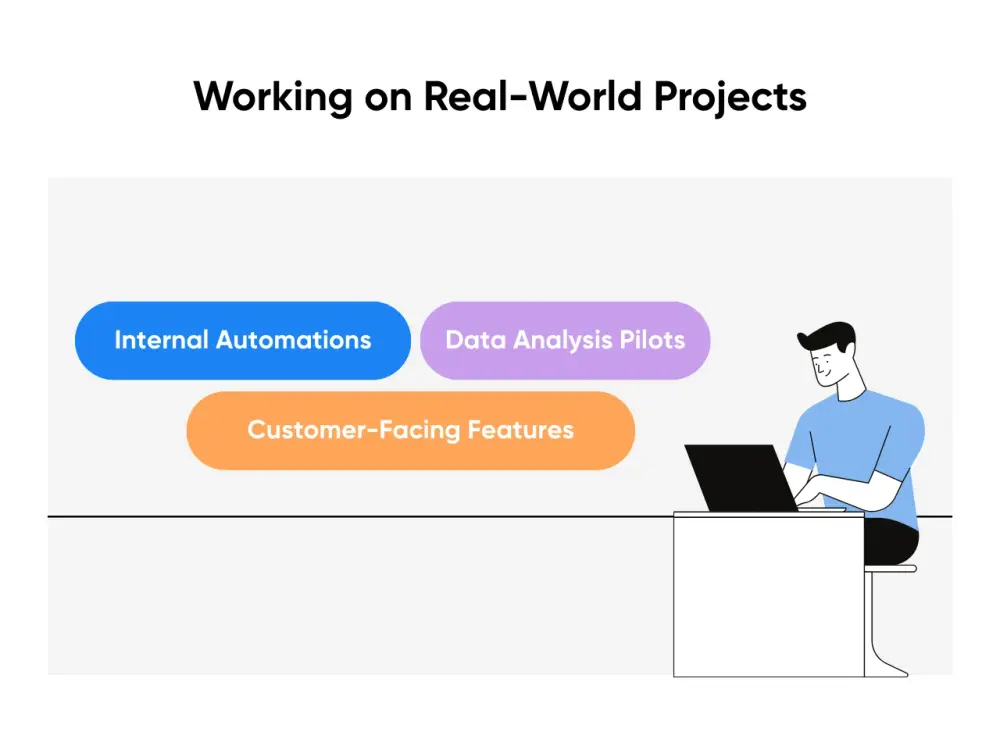
Hands-on work is where learning turns into business value. Start with contained projects, measure outcomes, and scale what works. Here's how:
- Internal Automations: Automate ticket sorting, invoice matching, or other repetitive tasks to free up your team for higher-value work.
- Customer-Facing Features: Add AI-powered personalization to recommendations or integrate a chatbot for instant support.
- Data Analysis Pilots: Use AI to spot trends in sales data or find bottlenecks in operations you can fix quickly.
Every project you launch should have a clear business case, success metrics, and a plan to refine the solution. That way, your AI initiatives stay tied to measurable business outcomes.
To help you put these capabilities into practice at scale, Aloa's workflow automation and internal tooling provide custom AI systems that deliver results you can measure from day one. We map your processes end-to-end, identify the points where AI can make the most impact, and design solutions that fit how your team actually works. That means no generic templates.
Leveraging AI for Business Advantage
Think of the AI learning journey as a way to rethink how decisions are made, how work gets done, and how your company stays ahead. With the right strategy, AI can shorten decision cycles, cut operational waste, and even open entirely new lines of business.
AI’s Impact on Business

AI delivers the most value when it’s tied to results you can measure, like lower costs, faster delivery, or stronger customer loyalty. Here are three areas where those wins tend to show up quickly:
- Decision-Making: Large Language Models (LLMs) can scan massive datasets and surface insights in seconds, giving you a jump on trends. A retailer could use AI to predict a demand spike and adjust stock before competitors even notice.
- Automation: Repetitive processes get handled in minutes instead of hours, freeing your team for higher-value work. A finance team, for instance, could reconcile thousands of transactions over lunch instead of overnight.
- Customer Experience: Personalization engines and chatbots can tailor interactions, cut response times, and improve loyalty. A bank might offer credit products based on a customer’s real spending patterns, not just static demographic data.
When AI is tied to clear targets, like cutting turnaround time by 20% or boosting retention by 15%, it shifts from “experimental tech” to a valuable business lever.
Ethical AI Development
Rolling out AI without proper checks is like launching a new product without testing. It might work for a while, but a single negative outcome can easily derail user trust and project momentum. Risks like biased hiring algorithms, misinformed credit decisions, or leaked personal data can spark public backlash and expensive legal battles.
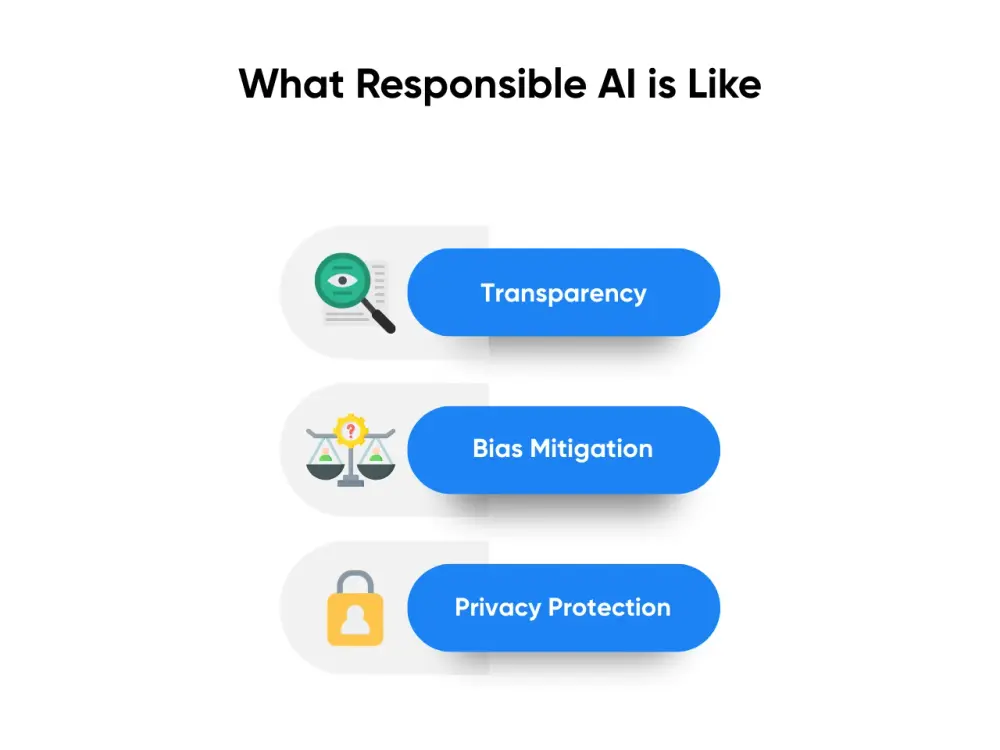
Building responsible AI means putting safeguards in place from day one:
- Transparency: Document and share how AI-driven decisions are made, especially when those decisions affect customers directly. For example, if a loan application is declined, be prepared to explain the key factors the model used.
- Bias Mitigation: Review datasets for gaps or overrepresentation that could skew results. A recruitment model trained mostly on resumes from one demographic will likely produce biased hiring recommendations unless corrected.
- Privacy Protection: Store sensitive data securely, limit access to only those who need it, and ensure it’s used solely for the purpose it was collected, whether that’s training a model or running an analysis.
These steps not only protect your reputation. They keep projects compliant with emerging AI regulations, reduce the chance of costly rework, and help your team build solutions that customers and stakeholders actually trust.
That’s why it’s important to get clear on what AI development means for your business before you start building. With Aloa’s AI consulting services, we work with leadership teams to set clear goals, check if your data is ready, and create a realistic plan.
AI Career Opportunities
Leaders who can connect AI capabilities to business results often become the go-to voice in their industry. That credibility can lead to advisory roles, board invitations, and cross-industry collaborations. The ability to evaluate proposals, ask sharp questions, and link technology decisions to measurable business impact is in short supply and high demand.
At Aloa, we post guides, case studies, and step-by-step breakdowns that make complex AI ideas easy to understand and use. The goal is to help business leaders and developers put AI to work in ways that drive innovation, use it responsibly, and connect with a wider AI community.
Check out our YouTube channel, where we share our latest learnings.
Key Takeaways
The ability to learn AI development isn’t about becoming a machine learning expert; it’s seeing where AI can cut a month-long process to a week, trim budget waste, or improve customer retention with targeted, timely interactions.
That’s what we focus on at Aloa. We work directly with leadership teams to identify where AI will have the biggest impact. From there, we design, build, and implement solutions that work with your data, so they deliver immediate value when implemented.
If you’re ready to freshen up your operations with AI, explore our AI development services. We’ll help you set clear goals, choose the right tools, and launch solutions your team can use from day one. Talk to us today!